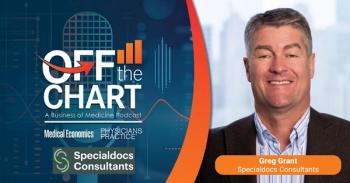
- Medical Economics January 2023
- Volume 100
- Issue 1
Now is the time for active portfolio management
In active management, investors rely on their skills (often with poor results) or those of professional investment managers (with widely varying results) to make investment decisions.
An important choice that investors face with every dime might be likened to the dilemma of the narrator of a poem by Robert Frost. In “The Road Not Taken,” the narrator recalls coming to a fork in the road and pondering which way to go.
For investors, one fork leads to active management — when investors choose investments themselves or pay professionals to do so. Or they could take the other road, into the terrain of passive management; here investors buy shares of funds whose holdings track a given index of stocks, bonds or other asset classes.
In active management, investors rely on their skills (often with poor results) or those of professional investment managers (with widely varying results) to make investment decisions.
By definition, all index funds are passive because their holdings track the movements of given indexes, such as the S&P 500. Most
Active management versus passive management is probably the most contentious ongoing debate in the investing world. At times, this debate is as contentious as that of Democrats versus Republicans or the merits of dogs versus cats or “Star Wars” versus “Star Trek.” As in all such debates, which is best for you depends on your goals and personal preferences, and making the best decision involves careful evaluation of the right information. Of course, this debate is fueled by investment companies that want your business, so it’s important for individual investors to block out this noise to make unbiased assessments.
Active investment generally means higher fees but potentially higher rewards. Also, many of the better active managers require a substantial minimum investment. These factors often make active management a good choice for at least part of the portfolios of many mid- or late-career physicians.
The argument for passive stock management, as proponents present it, is perennial, centering mainly on the idea that over time the major indexes rise on average. But various issues, including timing, individual goals, time horizon for retirement and risk tolerance, are important in choosing which way to go, making this choice much more complicated than simply relying on long-term market trends.
Moreover, unlike Frost’s narrator, investors can take both roads at the fork by using a combination of active and passive management, attempting to get the best of both worlds for different parts of their portfolios via different asset classes.
Passive can be pretty much set-it-and-forget-it — within limits. Yet even without major market shifts that might suggest advantages one way or the other, passive investing requires periodic rebalancing so that asset allocations don’t get too askew from the original design for purposes of portfolio diversification.
Yet the major stock indexes widely used in passive have their own risks, and this is perhaps the best argument for active investing — to steer around them. Risk management aside, active is also a way to position for potentially better gains.
As an active manager, I have an obvious bias. To my way of thinking, slavish devotion to passive investing is sort of un-American because this approach is inherently noncompetitive. When you buy a fund tracking an index, you will never beat that index, which can easily make you a C-minus investor from day one. Over the long haul, market averages might reduce risk, but during certain periods, you can suffer avoidable losses.
Of course, many investors are so afraid of getting a big, fat F that they go this route. But isn’t this accepting a midlevel finish in the Indianapolis 500 instead of going for the winner’s circle? Granted, many active managers can’t get you even close to drinking the milk or kissing the bricks at the raceway. But some can get you well ahead of the passive pack.
Statistically, most investors lack the psyche necessary for active management. They point to many active managers’ perennial failure to beat the market averages that passive can often yield. Yet, by using the right adviser in the right ways, you can have a pretty good chance of achieving asset-preservation goals, often beating the market to boot.
Criticisms of active management have been widely oversimplified, and the successes of passive over the past two decades came amid one of the greatest bull markets ever. Of course, major indexes are likely to rock during such periods.
The current market is a much different story. Since the long bull market transformed into a bear in January 2022, making money with passive management has become decidedly more difficult. Although the bear is probably now lumbering toward hibernation, tough markets likely lie ahead, with uneven recovery among different stock sectors and some indexes doing far better than others. In such markets, choosing the wrong passive fund can be injurious to your portfolio.
In late 2022, active management was having its best year since 2009 — the start of a long bull market, notably. Because this trend is likely to continue for the next few years, this is a time when active management merits consideration, even from current passive devotees.
Here are some reasons why now may be an especially opportune time to consider active management, at least for part of your stock portfolio:
The market recovery will likely be quite uneven, with some sectors shining early and others lagging for months or years. At this point, some sectors and indexes and the funds based on them are positioned to do better than others in the imminent recovery. For example, although many companies in the Nasdaq are badly beaten up by the bear and will likely rebound significantly, this index is populated by many smaller, earnings-challenged firms that are holding it back. Active management enables investors to select reasonably priced tech stocks with real earnings and profits — what I call
Another example is the S&P 500. This
The emerging shift from
Those approaching retirement should know that if you want income generation from a fund in the form of dividends, this usually narrows your options in actively managed equity funds, which tend to deliver income superior to that of passively managed funds. For those retiring soon, including practicing physicians lacking corporate pensions, dividend income is often a priority. Also, active management can be better suited to achieving wealth-preservation goals — a retirement priority.
Whichever road you take from Frost’s fork, it’s important not to stay at the fork too long, frozen with indecision. Choosing the right investment methodology is important, but a market recovery is imminent, if not current, and many prices will be rising soon. Ultimately, your gains from a stock depend on how low you get in.
Dave S. Gilreath, CFP, is a 40-year veteran of the financial services industry. He is a partner and chief investment officer at
Articles in this issue
almost 3 years ago
The top administrative challenges and what to do about themalmost 3 years ago
How physicians can find the right attorneyalmost 3 years ago
Where do you want to be in 2023?almost 3 years ago
Winter Bootcamp: Multifamily investing made simplealmost 3 years ago
Medical professional liability insurance - what you need to knowNewsletter
Stay informed and empowered with Medical Economics enewsletter, delivering expert insights, financial strategies, practice management tips and technology trends — tailored for today’s physicians.








